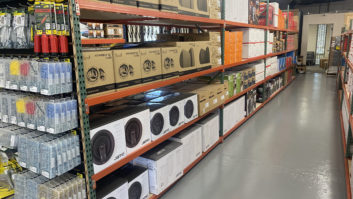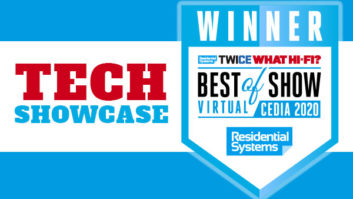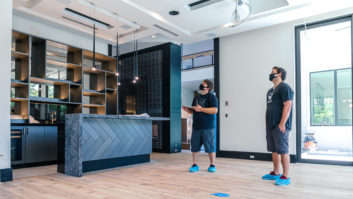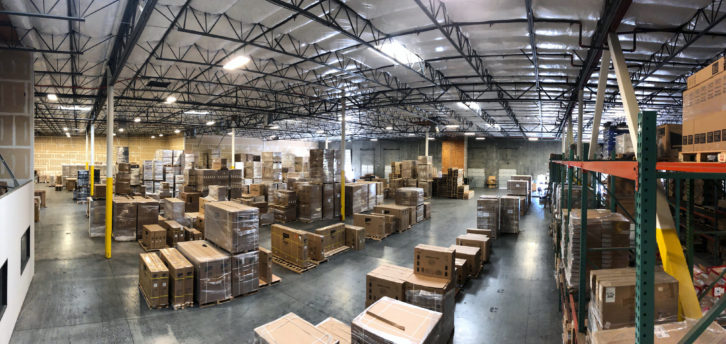
For top distributors such as PowerHouse Alliance, Snap One, ADI, and Exertis, navigating the waters of supply and demand is not without challenges, which currently include semiconductor shortages and supply chain delays.
Prior to Covid, the industry supply chain was much more stable, reliable, and predictable, notes John Dunne, managing director, Exertis North America. “Covid made the supply chain much more volatile and unpredictable, and so we moved quickly to increase our inventory of all major product categories before factories were forced to close.”
Exertis benefitted mightily from this decision when Covid created a huge surge in demand for all types of work-from-home solutions, even as demand for classroom and office solutions declined. “The good news now is that end-user vertical markets are recovering, and we are working with our manufacturers to identify weakness in the supply chain and take steps to increase inventory to mitigate the impact on our customers,” he says.
The reality, Dunne says, is that Covid is not the main cause of supply chain issues today. “It’s the global semiconductor shortage that presents the greatest challenge. This shortage has produced record unfilled demand within the industry and we are all working hard to mitigate the problem. The recent challenges of Covid and chip shortages make it more critical that distributors be able to work closely with several manufacturers in every important category to ensure that product is available when the customer needs it most.”
Before, most product was readily available with manageable lead times. “Inventory stocks must remain high in order to meet unexpected demands,” says Dunne. “In short, more than ever, distributors must be able and willing to anticipate and respond to the unexpected, and, to do that, distributors need to have commitment, scale, and resources.”
After an unprecedented year, the PowerHouse Alliance distributor members continue to see growth across the industry, says Dennis Holzer, executive director, PowerHouse Alliance. “Our members remain prepared for supply issues with our current line of products. Despite supply chain challenges across the industry, the 11 PowerHouse Alliance distributor members provide dealers and integrators with access to over 55 fully stocked warehouse locations across the United States. With a variety of different products available, integrators can come to the warehouse to purchase product and receive demos, or they can opt for curbside pickup or delivery.”
The personal connections at each location are also hard to beat, he notes, and have proven to be more important than ever this year as distributors help integrators source product for their projects. “We have seen recent challenges in our ability to take on new lines because manufacturers do not have the stock to support additional distribution,” says Holzer. “While supply chain issues have hindered growth across the technology industry, I expect that the industry will continue in the positive direction it has been on over the past year.”
Snap One’s approach to satisfying customers’ needs has not changed, says Wally Whinna, Snap One senior vice president of Local. “We are always looking for ways to help them operate more efficiently and profitably under any condition. When the pandemic began, we had to create new ways to service customers based on the constraints we had to deal with. We were able to ramp up delivery using courier service, and, because we restricted branch entry, we added delivery direct to van, dock delivery, and touchless 24-hour will call.”
Snap One pivoted to weekly webinars rather than in-person education events, he adds. “The webinars have been so successful that we will continue even after we bring back live training this fall. Additionally, our popular self-shop branch format is once again fully open for our dealer partners to browse and select the best products for their client solutions.”
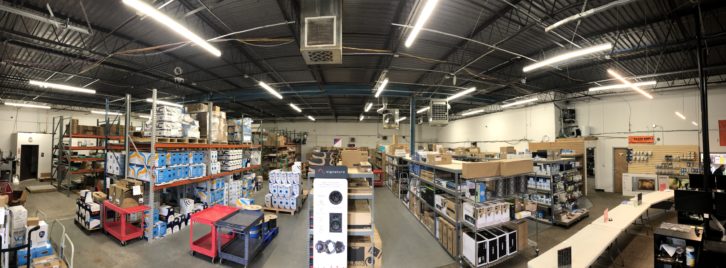
ADI has deep-rooted relationships with its customers and suppliers, and during the pandemic these relationships became even more important, says Bob Appleby, vice president and general manager, ADI North America. “We have a strong supply chain and logistics operation, and we’re focused on providing our customers with immediate access to the products they need, when they need them. Many of our customers do not maintain a warehouse and prefer to buy per-job to help improve their cash flow, and our in-stock inventory levels allow them to carry little or no local inventory.
“We have worked very closely with our supplier partners to ensure we have appropriate inventory levels,” he notes. “Our demand planning team regularly collaborates with both suppliers and integrators to quickly identify any potential shortages and monitor inventory levels.
“Short term, logistics and supplier material shortages have been top-of-mind across our industry. As many are aware, the chipset shortages have resulted in extended lead times on a variety of manufactured goods both in and out of our industry. This situation has been further aggravated by container shortages in China and significant price increases from freight vendors. We work with our supplier partners to monitor our inventory levels and quickly identify any potential shortages. And we conduct an integrated business planning process with our suppliers to identify their current inventory, secondary and tertiary component sourcing, and levels of production so that we can respond with additional safety stock or expedite orders where appropriate. We’re also staying engaged with our carriers to mitigate the potential for container availability challenges and port congestion. While we have sufficient inventory in stock to meet the demands of our customers, we are continually monitoring the situation to lessen any possible impact to them.”
During the pandemic, Appleby says, “Online ordering was imperative, and we continue to make strategic investments to drive greater digital-enablement. We launched a series of upgrades to our digital branch that enhanced the online shopping experience for customers, and is delivering a significant impact. For example, customers can now place an order directly from our website or mobile app and select an option to pick up the order from a secure locker after hours or over the weekend. Additionally, customers can visit our website and easily request a quote online from a salesperson. The quote is emailed to them and available in their account menu, where they can convert the quote to an order for seamless purchasing; it’s that easy.
“Overall, our global ecommerce customer usage was up over 32 percent YOY in Q1 and ecommerce revenue increased by more than 59 percent YOY in Q1. We expect these results to continue to increase as we roll out even more features, including a more robust search tool and our new mobile app that will make finding and purchasing products from ADI fast and easy. We’re also implementing a Product Information Management (PIM) tool to enrich product descriptions and specifications, and incorporating AI to provide cross sell and upsell opportunities.”
You’re So Remote
As people spend more time at home, they are making more investments in their houses, which has led to an increase in residential AV, networking, intrusion, and smart home products, Appleby notes. “More consumers have home offices now and we’ve seen a rise in home networking upgrades, conferencing technologies, home security systems, and smart home products. Over the past year, we saw accelerated activity across all home technology categories. Initially, work-from-home solutions were most prevalent, but soon after we saw residential video, whole-house audio, and outdoor entertainment categories in significant demand. With the increase in home technologies, we saw a strong correlation for more robust home networking solutions.”
This momentum continued through the first quarter, he adds, and is expected to follow through the second half of 2021. “Also, as the hybrid learning model continues to be widespread, we’ve been supplying technologies that bridge and enhance this experience in both the classroom and in the home. During this time, ADI hosted numerous webinars and panel discussions with our supplier partners to help customers learn about the technologies becoming most important to end customers, and pivot their businesses as needed.”
Although employees will be brought back into an office environment in some capacity, many will only be in-person for part of their work week, says Whinna. “So reliable and robust internet service in the home will continue to be important. Demand for network products continues to over-index other categories. With the addition of Access Networks to our network brand portfolio, we now assort six networking brands to satisfy any application from small space to enterprise grade. We also have the education assets, technical support, and system design assistance to back up these brands and ensure that customers complete their projects with a satisfied client.”
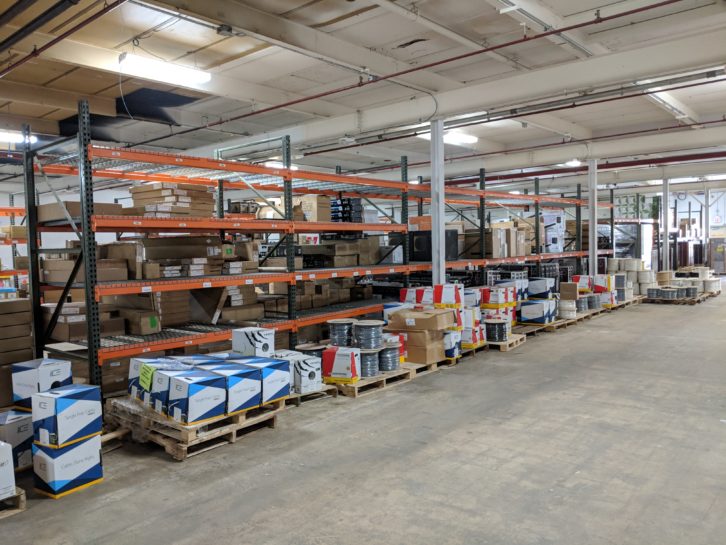
At Exertis, customer needs have grown and expanded because of Covid, says Dunne. “In the beginning, there was a great demand for unified communication products and solutions as people transitioned to working and learning from home. Products like headsets, speakers, and cameras quickly became top-selling categories across all verticals. With vaccines now widely available and society beginning to open again, we are still seeing a steady demand for these products as a hybrid work from home environment is likely to be part of the new and better normal.”
At the same time, he adds, with children returning to school and professionals returning to offices, customers are ordering the return-to-office and return-to-class technologies they need to transform their physical spaces. “We are seeing increased demand for anything that helps to facilitate a safe, touch-free environment, including a strong growth in quick serve drive-through solutions.”
Based on product demand from integrators, it is evident to the PowerHouse Alliance distributor members that consumers will continue to work remotely, Holzer explains. “According to the recently released PowerHouse Alliance white paper, A Landscape of Change: Charting New Territory in the Custom Installation Industry, the PowerHouse Alliance members report over 200 percent growth in networking sales through 2020. With an increase in working and entertaining from home, consumers are looking to networking products to support the expanding lineup of devices in the home. Overall, the transition to working and entertaining from home has caused a large surge in the demand for networking products across all PowerHouse Alliance members.”
Trendy
Moving forward, Holzer expects networking, surveillance, and displays to reign as top product categories for the next year. “The popularity of networking likely didn’t surprise integrators as much as it did homeowners,” he says. “When everyone was working, learning, and entertaining exclusively from home, the blemishes in the home network became more apparent. We can expect this trend to continue through the year as hybrid work and school are likely to remain a constant, but the tolerance for low speeds or a limited number of the devices on a given network has exponentially decreased.”
The surveillance category will also experience continued growth within the next year, he says. “As homeowners make home upgrades, they look to security devices that are easy to install and easy to monitor. As video surveillance devices continue to improve, homeowners will be notified when the carpenter has come and gone or when a package has been delivered to the front door. With an enhanced desire to keep the home and family safe, consumers will look to security devices with video surveillance capabilities to get the job done.
“With more people purchasing new houses and making home upgrades, the display category has also taken off and I expect this trend to remain prominent throughout the remainder of the year,” Holzer notes. “As consumers upgrade their home entertainment areas, they look to new and upgraded TVs to complement their newly installed surround sound speaker systems. Video quality continues to improve, and larger displays are available, making consumers eager to purchase upgrades that will complement their living room or entertainment areas. The PowerHouse Alliance distributor members expect 8K displays to have a positive impact on the display market in 2021 and beyond.”
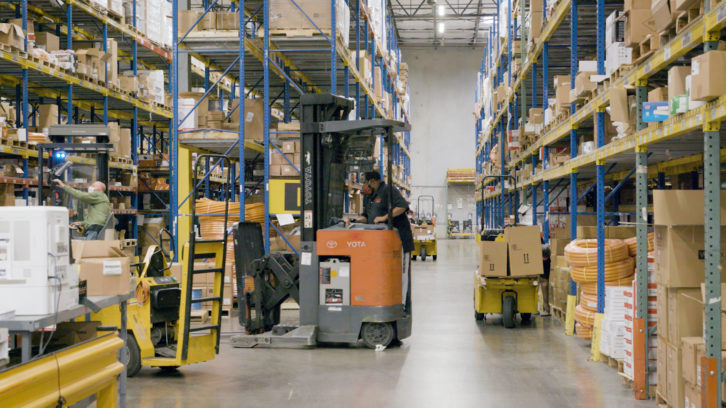
Dunne notes a significantly increased demand for gestural, touch-free displays, more automation in retail environments, and self-service drive through solutions in general. “The long-term trend of working from home is going to generate sustained demand for better audio, displays, camera,s and connectivity solutions. The same applies to returning to offices and to classrooms. Covid has underscored the importance of every type of enterprise having the right mix of flexible tech in place to be able to meet any challenge the future brings. Technology is our lifeline to the world.”
What’s more, augmented and virtual reality is becoming a standard in a broad range of environments in education, corporate, hospitality, and real estate, among others. “Drones are being used in more and more applications like surveillance, package delivery, real estate, surveying, mining, and videography,” says Dunne. “And, not surprisingly, we are seeing the introduction of autonomous robots in more markets.”
Dealers have discovered the benefits of transacting business through distribution during the pandemic, Whinna says. “When needs increased and business ramped up, customers had less administrative time, so more products were sourced from distribution. Purchasing through distribution can sometimes be more expensive upfront than direct, however, the savings in employees, warehouse space, accounting, and working capital can more than offset any additional costs.”
When you have a one stop shop like Snap One, you can source product for your entire project, which makes your business operations more efficient, he adds. “It should be looked at the same as outsourcing any particular job function. Our dealer partners can spend more time selling, which leads to more jobs, which in turn leads to more profit.”
The Challenge
“Technology is changing quickly, and dealers depend on their distributor to help with product selection and design, so it’s imperative our team remains up-to-date on the latest technologies to successfully help customers,” says Appleby. “We’re proud to have some of the most knowledgeable and well-trained professionals in the industry. Our ADI University internal training program provides our sales team with comprehensive education on the newest products and market trends. Each member of our team participates in weekly courses across a wide variety of categories, so they are prepared to support customers.
“Our employees are our most valuable asset and we continue to invest in our teams with training, tools, and resources to help them successfully do their jobs, ” he adds. “We’re making significant investments to equip our teams with more digital tools to improve sales effectiveness. We implemented a software platform to automate the sales order process that speeds up order times for customers and creates more bandwidth for our team. We have also implemented business intelligence tools that give our sales team real-time access to a variety of customer data, and machine learning technology that tracks and highlights buying patterns. This data allows our team to be more helpful in meeting the needs of our customers. Diversity, equity, and inclusion are integral to the success of ADI, and it’s part of our mission to actively reach out to people of diverse backgrounds and experience to join our teams.”
The supply chain has never been more challenging than it is today, Whinna says. “The pandemic caused production lapses, shortages of microprocessors, shipping delays, and so on. It’s really been a perfect storm, resulting in tight product supply. We work closely with our vendors to ensure the products that our partners need are in stock, so they can complete jobs on schedule. Our proprietary brands have been in a positive inventory position as we have worked closely with our suppliers to ramp up production schedules and keep parts flowing. We see this challenge continuing through 2021 and possibly into early 2022.
“We have been fortunate to have very low turnover of employees this year,” he adds. “We are opening 11 new branches in 2021 and have been able to fully staff them with very experienced, successful team members. With our rapid branch expansion and sales growth, there are great job growth opportunities for our team, making us an attractive company to join. We have had a number of team members transfer to new branches to take on management positions.”
Holzer agrees that supply chain delays are a major factor impacting distributor members and the custom installation industry as a whole. “Product demand is very high, and integrators rely on the PowerHouse members to be stocked with the products they need to complete installations on time,” he says. “With supply chain issues, getting some new products to the warehouse has been a challenge. Other than that, the PowerHouse Alliance members are very busy and continue to provide training and new product demonstrations to integrators when they need them, some are even opening additional locations. As a group, we have not been challenged in getting employees. In addition, the PowerHouse Alliance has partnered with CEDIA to develop a program to help increase the number of employees and technicians that will be available to integrators for hire.”
Dunne says Covid has reinforced the incredible value of a well-trained workforce that can respond to meet any kind of challenge. “Our team is our greatest asset,” he says. “We need to support and keep our team completely invested in the future of our business and the industry at large that we serve. The status quo simply will not be enough for the future success of all of us. We must support whatever our team needs to work effectively, be that in the office or remotely from home. We must provide them with the tools, programs, technologies, and support services they need to continue to perform at their very best. They were there for us and for our industry during the darkest hours of Covid. We need to show them that we are going to be there for them today and in the future.”

